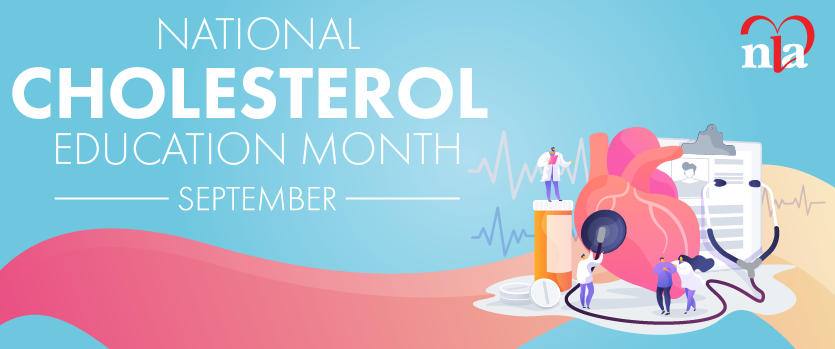I have an appointment tomorrow am with my 21 mo old patient who was referred to me at age 13 mo with a 8h fasting LDL-C of 846, TG 76, HDL-C 42 and Lp(a) 167 mg/dL. There were no indications of secondary hyperlipidemia, and his 7 yo sister has DNA confirmed homozygous FH (and no cardiac disease) treated for 3 years with LDL-apheresis. The birth history was unremarkable but length has been at the 5-10% and weight for height consistently at the 5th percentile. There are xanthomas over the lateral ankles. His visit with the dietitian revealed poor caloric intake, spitting of food and an imbalanced diet. It has improved with nutritional counseling and a brief period of a medication prescribed by a gastroenterologist, and weight is slowly increasing. A coronary angiogram and echocardiogram were normal.
In addition to diet, he began statin and then ezetimibe with the following poor response in LDL but no side effects:
Chol LDL-C HDL-C TG
Baseline 903 846 42 76
atorvastatin 5 mg qod (2.5 mg/d) 888 812 33 213
atorvastatin 5 mg qod + ezetimibe 5 mg qod 1065 “can’t calc” 34 126
atorvastatin 5 mg qod + ezetimibe 10 mg qod 944 889 31 118
Do I
1) Increase atorvastatin and/or ezetimibe or change to crestor? Do we have any information about safe statin dosing on a mg/kg basis?
2) Since LDL lowering has been minimal, hold tight until he is older with better growth and large enough for LDL-apheresis (as early as age 3)?
3) Recommend liver transplant (mother already rejected this option for her daughter)?
We usually repeat the angiogram and echo in 1 year after baseline to assess the rate of change of disease (if any). Agree?
Because of the poor growth, I would not try Juxtapid or mipomersen off-label. He will be too young for the upcoming Juxtapid pediatric trial.
Thanks,
Lisa





.jpg)
.png)












Challenging case to be sure. I would consider switching to Crestor plus Zetia, even upping the dose of statin a bit. Am not aware of toxicity data on a child this age, though perhaps animal studies available. Agree apheresis at age 3 next best bet.
Good luck
Bill
I agree with you on being cautious with ASA. we do use it in kids with CAD but not with clean CAs.
For the CTA, we put them under anesthesia and give them beta blockers for the procedure. you can imagine the coordination issues with anesthesia are pretty daunting but fortunately it doesn’t come up too often.
Sarah
Sorry to chime in late, but I wanted to throw in my $0.02.
I truly doubt that any available pharmacotherapy is going to have significant clinical impact on this child, given the height of the LDLc and the documented homozygous null receptor status. Nonetheless, optimizing medical therapy at as high a dose/intensity of combination pharmacotherapy makes sense, but LDL-apheresis asap is critical. I typically think of a starting age as ~7 yo; can you do it younger? I do think vascular imaging has a role too since if there is already significant atherosclerosis noted, liver transplantation could be considered. If atherosclerosis is minimal, then I would defer transplant, try to get lomitapide compassionate use approval and do apheresis asap. I don’t think any other biomarkers would sway my (eg Lp(a)) risk assessment in this case.
Dan
The extracorporeal volume limits LDL-apheresis to patients ~15 kg or ~3 y of age. We successfully treated a 3 year old but could not establish the minimum blood withdrawal rate of ~20 mL/min in 2 others because of small veins. We avoid using a port when coronaries have minimal disease because of the high risk of infection. In 2 older kids with small veins, we placed an AV fistula.
Lisa
Being able to achieve the required extraction / flow rates required for apheresis is challenging in young children.
I agree with your concern about port related infection. We treated two hoFH sisters with apheresis, both of whom had significant coronary and aortic disease at 8 and 10 yrs of age. Despite our attempts, care of the ports was problematic for this family. The younger child, who had the more severe changes, developed septicemia and tragically died.
Don
To give an update, I changed (with insurance hassle!) atorvastatin to Crestor, 5 mg qod, and continued Zetia at the same dose 5 mg qod because I had a 3 yo who went to the ER with severe abdominal pain and rash after I started Zetia. He is still small (9.6 kg), so I want to wait until he is larger before considering Juxtapid. Sam raised the interesting possibility of unusual pharmokinetics and perhaps malabsorption of drug?
I presume he has the same DNA mutations as his sister (c.249delTinsGG,done at Baylor). I think these are receptor absent, null mutations. She had a similar small decline in LDL with statin- 8% (763 to 699) on atorvastatin with no additional reduction on Zetia, so I discontinued it. Maybe I’ll stop it in her brother.
Her sister’s Lp(a) was also high- 92.5 mg/dL before LDL apheresis. I should check Lp(a) in mother; Dad is separated from the family and in Mexico.
Michelle, I do not use asa prophylactically in children with high Lp(a)- just try to reduce the LDL and other risk factors. I haven’t even decided whether to use it in hoFH children with mild coronary disease.
Sarah, we were not doing CTA in children less than 3 because of the fast heart rate, but I just learned we have a new FLASH scanner CTA that circumvents this problem- will fill you in once I learn more.
Lisa
As we genotype these patients we need to look for genotype phenotype interactions, also there may be something else as the TC in this patient is 200 higher than the sib.
Sam